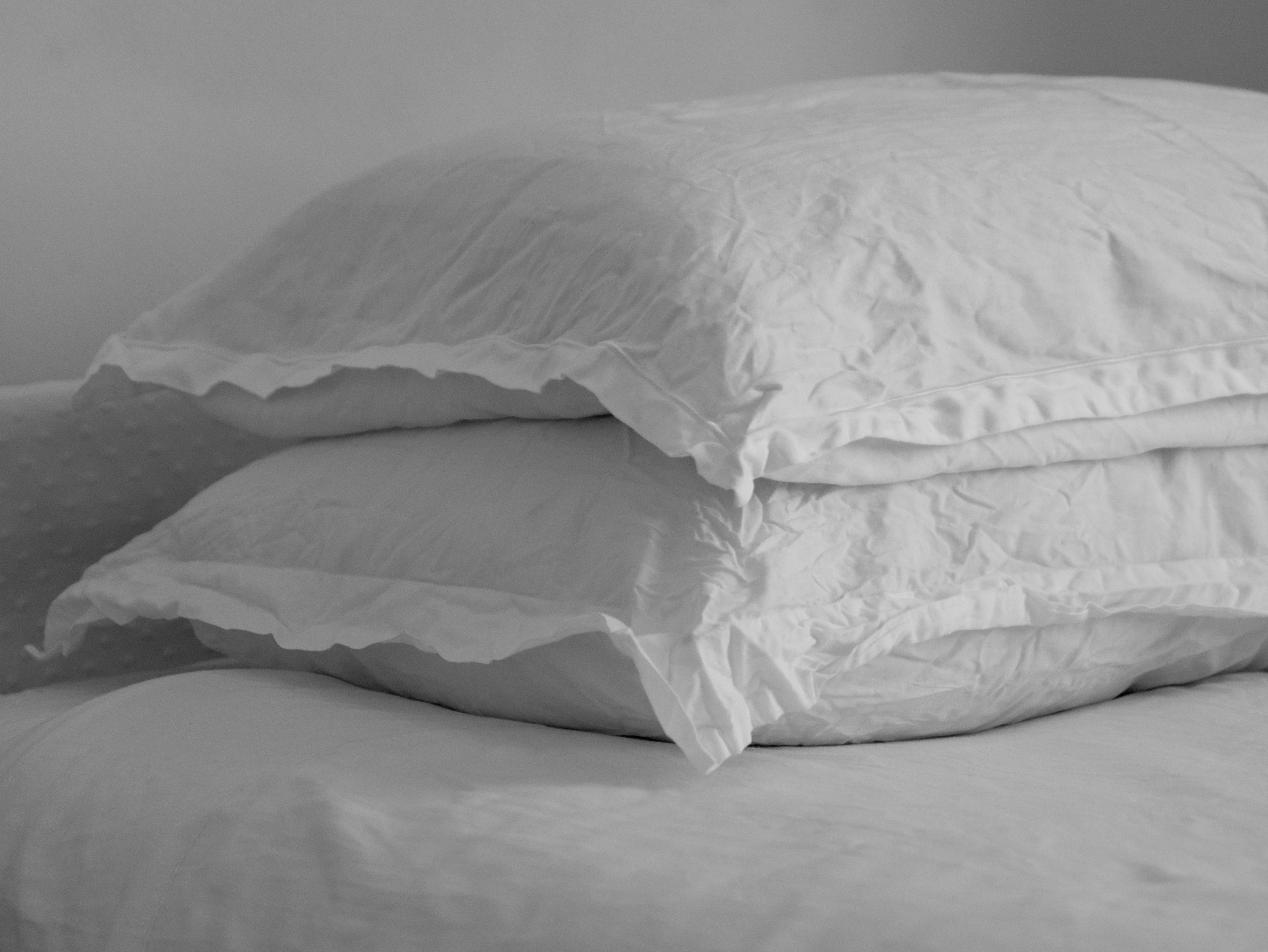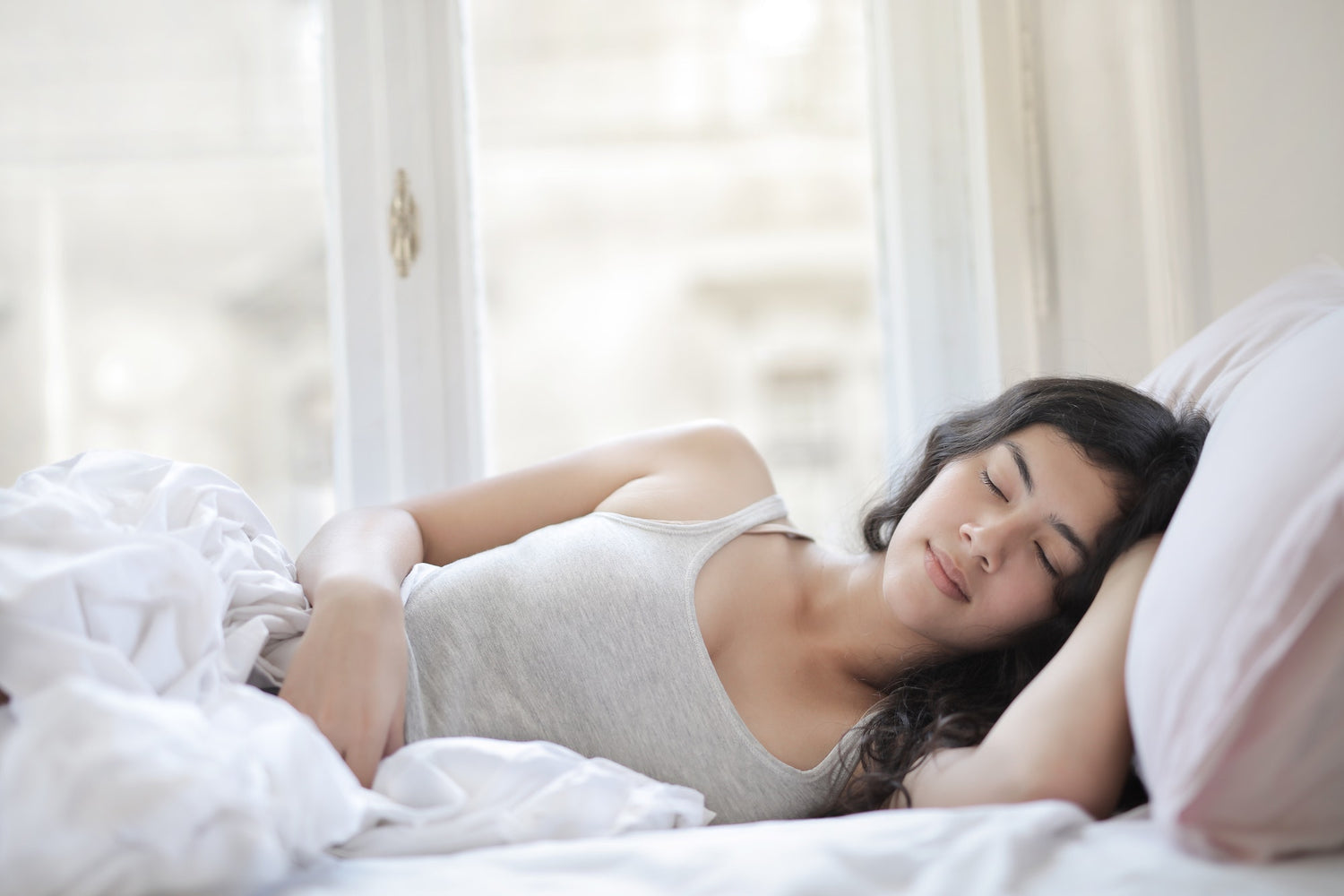Pillow Talk: Choosing the Right Pillowcase for Your Bedroom
Choosing the right pillowcase for your bedroom is fundamental for your sleeping habits. After all, a pillowcase is not just a simple cover for your pillow, but it can also affect the quality of your sleep and the overall look and feel of your space.
Getting the right pillowcase can be challenging when you take all the different factors needed to make the right decision. The pillowcase material, thread count, weave, color, pattern and size are quite significant, and with that in mind, choosing the perfect pillowcase can seem overwhelming.
However, by understanding the distinctions between these factors and the way they impact your sleep and your decor, you can make an informed decision that meets your needs.
In this blog, we'll take a closer look at how to choose the right pillowcase for your bedroom. We’ll also clarify the distinction between a pillowcase and a sham, so you know the difference before buying.
Whether you're looking for a pillowcase that is soft and cozy or prefer something bold, we've got you covered. So, let's get right into it and discover the world of pillowcases!
Is it a pillowcase or a pillow sham?
When talking about bedding, most people seem to think pillowcases and shams can be used interchangeably, but they are actually not the same. While the purpose they serve is similar, they have important differences in terms of their design and function.
A pillowcase is a simple cover that you place over a pillow to protect it from getting dirty, while also providing a comfortable surface to rest your head on. Pillowcases come with an open end that allows you to slip your pillow inside, and they come in different materials and colors to match your bedding. Pillowcases are meant to be practical, and are usually tucked away behind your other pillows and covers.
A sham pillow, on the other hand, is a pillow that serves a decorative purpose, with stylish covers that are meant to be displayed on top of your other pillows or throw pillows. Shams are usually larger than pillowcases and have a decorative border that frames the pillow inside. They often come in sets with a duvet cover or quilt, and are designed to add a decorative touch to your bedding. Shams are not meant to be a sleeping companion, but serve as decorative pillows, and are usually taken from the bed at night.
In terms of manufacturing, shams are usually made with a heavier weight fabric than pillowcases, and they may have additional decorative details like embroidery. You can also find them in greater variety when it comes to shapes and sizes, with options like Euro shams and bolster shams.
To get a clearer picture of what a sham is, take a look at our Iconic Collection Microfiber Pillow Shams Set. This set of shams is easily paired with any bedding collection to instantly maximize the style of your bedroom. They are made with ultra-soft microfiber, ideal for comfort and luxury.
Now that you have a clearer picture on the differences between a pillowcase and a sham, let’s get into the different factors you should consider when buying the perfect pillow case to suit your specific needs.
Take a moment to consider our Iconic Collection Microfiber Pillowcases for a pair of pillowcases made with high-quality brushed microfiber that is ultra soft while also being hypoallergenic.
Material Matters
The first thing to consider when choosing a pillowcase is the material used in its manufacturing. Different materials have particular qualities that affect the way your pillow feels and functions. Let’s have a look at some of the most common materials used for pillowcases, with their benefits and disadvantages:
Cotton
A very popular choice for pillowcases is cotton, because it is soft, breathable, and durable. It is also easy to wash and maintain. However, there are a lot of different types when it comes to cotton. If you are interested in getting the best cotton pillowcases, you should look for pillowcases made from high-quality, long-staple cotton, such as Egyptian or Pima cotton.
Silk
Silk pillowcases are often recognized as the ultimate luxury bedding item. They are soft, hypoallergenic, and incredibly gentle on your skin and hair. They are also great when it comes to temperature regulation, which means they can keep you cool in the summer and warm in the winter. However, silk is delicate and requires special care to maintain its luster and softness, and that extra effort can be a deciding factor for a lot of people.
Consider our Mulberry Silk Pillowcase for the best silk pillowcase available in the market. This pillowcase is not only incredibly luxurious, but it is also remarkably soft to the touch and helps in keeping your skin healthy by retaining moisture throughout the night.
Satin
If you are looking for a pillowcase that has a lot of the benefits of silk without the level of maintence and higher price tag, satin might be the best choice for you. Satin is a synthetic material that imitates the look and feel of silk while being affordable, durable, and easy to care for.
Linen
Linen is a natural, breathable material that is amazing for warm climates. It also has hypoallergenic and antimicrobial properties, making it a great choice for people with allergies or sensitive skin. One downside to linen is that it wrinkles easily and requires ironing to maintain its smooth appearance.
What about the thread count?
Thread count refers to the number of threads woven into one square inch of fabric. As the thread count goes up, the more soft and smooth the fabric will feel. Keep in mind that a higher thread count does not always mean better quality.
Other factors impact the quality of apillowcase, such as the material used and the weave of the fabric, which plays a very important role in how the pillowcase feels.
When thinking about cotton pillowcases, a thread count between 200 and 800 is usually sufficient. For silk and satin pillowcases, thread count is not as important because the fibers are naturally smoother and silkier than cotton.
Weave style
The weave of the fabric is a key element because it changes the way the pillowcase looks and how it feels. Let’s look at some of the common weaves used for pillowcases:
Percale
Percale is a simple, classic weave that builds a crisp, cool fabric. It is ideal for warm environments.
Sateen
If you are the type of person who would rather have a softer yet luxurious feel, a sateen weave may be the choice for you. Sateen is a complex weave that creates a silky feel in the fabric.
Jersey
If you are into a more casual look and comfortable feel, then a jersey weave might suit you best. Jersey is a stretchy, knit weave that creates a soft, cozy fabric.
Colors and patterns
Another thing to consider when buying a pillowcase is how it will impact the overall design of your bedroom. Choosing the right color and pattern is indispensable if you are looking for a stylish look.
Match your bedding
If you want a look that is consistent, you should choose a pillowcase that goes with your sheets and duvet. You can also opt for a more eclectic style by mixing different patterns and colors from the same color family.
Make a statement
Any piece of your bedding can be a statement if you design the style accordingly. For your pillowcase, be sure to choose a bold color and pattern that stands out. This can really add to the visual design of your bed.
Getting the right mood
Did you know you can use different colors to change the mood perception of your room? Use blues and greens to create an atmosphere that feels relaxing and calm, or use bright reds and oranges to add more warmth to the room.
Pillowcase sizes
Choosing the right size is fundamental for selecting the correct pillowcase. Queen size pillows and king size pillows use different pillowcases. You should always get the pillowcase that fits your pillow to ensure proper grip and comfort. Let’s take a look at the most common sizes available:
Standard
Standard pillowcases are the most common size. The typical measurement of a standard pillowcase is 20 inches by 30 inches.
Quen
Queen pillowcases are made to match queen pillows. A queen pillowcase is larger than the standard pillowcase and its common measurement is 20 inches by 30 inches.
King
King size pillowcases are bigger than the queen size, with a measurement of 20 inches by 36 inches.
Care and maintenance of pillowcases
One thing that should never be overlooked is the care and maintenance of your pillowcase. Not all materials need the same level of care. For instance, silk requires special treatment to maintain its quality and look. Meanwhile, cotton and synthetic materials are generally easier to care for.
Let’s take a look at some tips to ensure proper care for your pillowcase:
Wash regularly
In order to remove dirt, oil and bacteria, you should wash your pillowcase at least once a week. Changing the pillowcases once a week is beneficial for the health of your skin.
Follow instructions
Not all materials need the same level of care, so always read the care instructions to understand the correct way to wash and dry your pillowcase.
Get more than a pair of pillowcases
A good idea to keep your pillowcases from wearing out is to have more than one pair so you can rotate them and avoid overuse.
To conclude
In conclusion, getting the right pillowcase for your bed is a fundamental decision that should be considered seriously.
The right pillowcase provides a comfortable surface to rest your head on while also adding a decorative element to your bedding, which enhances the overall ambiance of your bedroom.
By considering different factors like material, weave, color, size, care and maintenance, you can find the ideal pillowcase that meets your needs and preferences.
We hope this blog has been helpful in providing all the necessary information to make the right purchase, and don’t forget to check on the following products to make the most of your bedroom:
- For a pair of pillowcases made from high quality microfiber, consider our Iconic Collection Microfiber Pillowcases. These pillowcases are hypoallergenic and incredibly soft, and a great match for our Iconic Collection Microfiber Duvet Cover Set.
- Take a look at our Mulberry Silk Pillowcase for a pillowcase that is luxurious while incredibly soft. It also helps to keep your skin healthy and radiant.
- If you are not feeling the pillowcases, get luxurious with our Iconic Collection Microfiber Pillow Shams Set. They instantly add a level of style and fashion to any bedroom and could pair magnificently with our Shaggy Duvet Cover Set.
- Lastly, if you are the lucky owner of a body pillow, take a look at our Iconic Collection Microfiber Body Pillow Case. This pillowcase will make you appreciate your body pillow even more!




